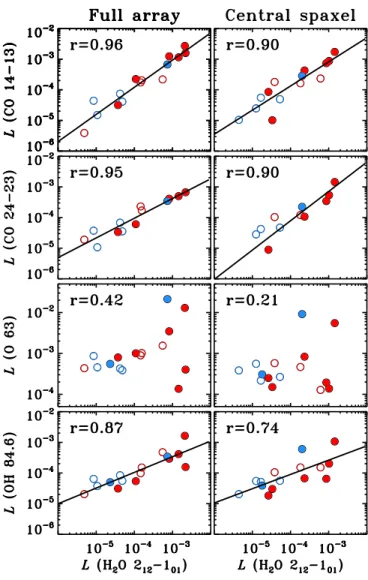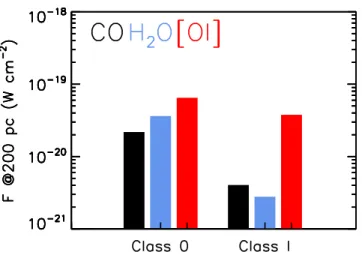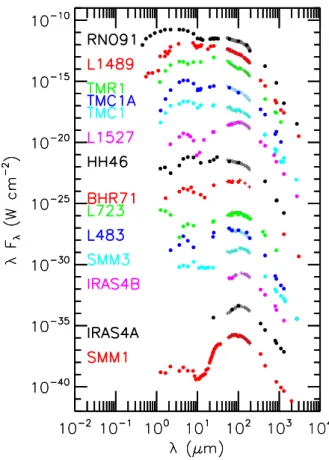Water in star-forming regions with Herschel (WISH): III. Far-infrared cooling lines in low-mass young stellar objects
Texte intégral
Figure


![Fig. 8. Relative contributions of CO (red), [O i ] (green), OH (yel- (yel-low) and H 2 O (blue) to the total far-IR gas cooling integrated over the entire PACS array are shown from left to right hori-zontally for each source](https://thumb-eu.123doks.com/thumbv2/123doknet/14110628.466560/10.892.78.438.79.351/relative-contributions-green-cooling-integrated-entire-zontally-source.webp)

Documents relatifs
strip in good photometric conditions but having too few standard star measurements to perform the calibration may induce alone this offset; the equal number of detected objects as
Notre travail n’a pas traité directement de la synthèse de gestes plausibles. Notre objectif premier était de fournir un système capable de contrôler un robot
– The effects of bioturbation by the burrowing shrimp Calocaris ma- candreae on the structure and diversity of the associated macrobenthic community were quantified in a
Surface valvaire interne montrant les trois pores satellites des processus renforcés marginaux et les deux pores satellites du processus renforcé légèrement
• CP5 (mHwcLs, maritime High weak, continental Low strong): CP5 (Figures 7e and 8e) is characterized by a subtropical High shifted far into the South Atlantic and a strong
These results indicate that Ca 2+ binding to the Syt 1 C2A domain is required for suppression of the asynchronous component of release, whereas Ca 2+ binding to C2B triggers





